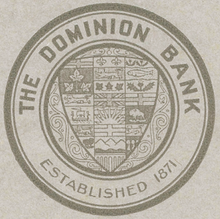
The Toronto Stock Exchange is a stock exchange located in Toronto, Ontario, Canada. It is the 10th largest exchange in the world and the third largest in North America based on market capitalization. Based in the EY Tower in Toronto's Financial District, the TSX is a wholly owned subsidiary of the TMX Group for the trading of senior equities.
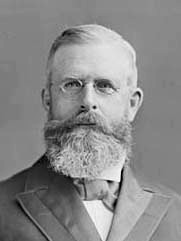
Sir William Mulock was a Canadian lawyer, businessman, educator, farmer, politician, judge, and philanthropist. He served as vice-chancellor of the University of Toronto from 1881 to 1900, negotiating the federation of denominational colleges and professional schools into a modern university.

The Bank of Montreal, abbreviated as BMO, is a Canadian multinational investment bank and financial services company.

Toronto-Dominion Bank, doing business as TD Bank Group, is a Canadian multinational banking and financial services corporation headquartered in Toronto, Ontario. The bank was created on February 1, 1955, through the merger of the Bank of Toronto and The Dominion Bank, which were founded in 1855 and 1869, respectively. It is one of two Big Five banks of Canada founded in Toronto, the other being the Canadian Imperial Bank of Commerce.
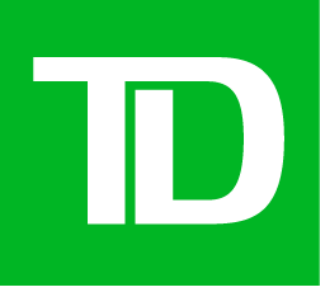
TD Canada Trust, commonly shortened in marketing to simply TD, is the Canadian commercial banking division of the multinational TD Bank Group. It is the second-largest commercial bank in Canada by assets, behind only the Royal Bank of Canada. TD Canada Trust offers a range of financial services and products to more than 10 million Canadian customers through more than 1,100 branches and 2,600 ATMs.

The Toronto-Dominion Centre, or TD Centre, is an office complex of six skyscrapers in the Financial District of downtown Toronto owned by Cadillac Fairview. It serves as the global headquarters for its anchor tenant, the Toronto-Dominion Bank, and provides office and retail space for many other businesses. The complex consists of six towers and a pavilion covered in bronze-tinted glass and black-painted steel. Approximately 21,000 people work in the complex, making it the largest commercial office complex in Canada.

Royal Bank of Canada is a Canadian multinational financial services company and the largest bank in Canada by market capitalization. The bank serves over 20 million clients and has more than 100,000 employees worldwide. Founded in 1864 in Halifax, Nova Scotia, it maintains its corporate headquarters in Toronto and its head office in Montreal. RBC's institution number is 003. In November 2017, RBC was added to the Financial Stability Board's list of global systemically important banks.
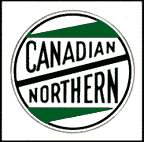
The Canadian Northern Railway (CNoR) was a historic Canadian transcontinental railway. At its 1923 merger into the Canadian National Railway, the CNoR owned a main line between Quebec City and Vancouver via Ottawa, Winnipeg, and Edmonton.

TD Waterhouse Canada Inc. is a Canadian financial services corporation headquartered in Toronto, Ontario. It is a wholly owned subsidiary of Toronto-Dominion Bank. The company does business through several divisions, namely TD Direct Investing, TD Wealth Financial Planning, and TD Wealth Private Investment Advice. The TD Waterhouse brand was also formerly used for TD's American and British brokerages.

The Canadian Bank of Commerce was a Canadian bank that operated from 1867 to 1961. It merged in 1961 with the Imperial Bank of Canada to form the Canadian Imperial Bank of Commerce, which today is one of Canada's Big Five banks.
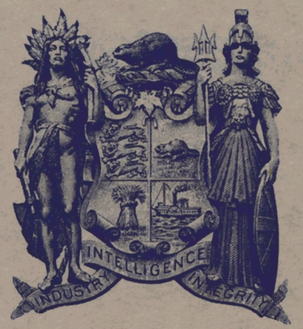
The Bank of Toronto was a Canadian bank that was founded in 1855 by a group of grain dealers and flour millers. On February 1, 1955, it merged with The Dominion Bank to form the Toronto-Dominion Bank, which is now known as the present-day TD Bank Group. Its first president was James Grant Chewett, whose support was sought by financier Thomas Clarkson.
Allen Thomas Lambert, OC was a Canadian banker and former Chairman of the Toronto-Dominion Bank.
Darling and Pearson was an architectural firm based in Toronto from 1895 through 1937. The firm was prolific and produced consistently fine work though the patronage of notable figures of the Canadian establishment, and is responsible for enhancing the architectural character and quality of the city, and indeed the rest of Canada, in the first quarter of the 20th century.
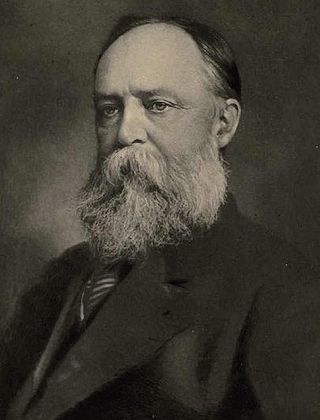
Sir Byron Edmund Walker, CVO was a Canadian banker. He was the president of the Canadian Bank of Commerce from 1907 to 1924, and a generous patron of the arts, helping to found and nurture many of Canada's cultural and educational institutions, including the University of Toronto, National Gallery of Canada, the Champlain Society, Appleby College, Art Gallery of Ontario and Royal Ontario Museum.

The Bank of Hamilton was established in 1872 by local businessmen in the city of Hamilton, Ontario, Canada under the leadership of Donald McInnes, the bank's first President. Like the other Canadian chartered banks, it issued its own paper money. The bank issued notes from 1872 to 1922. The end dates are the final dates appearing on notes, which may have circulated for some time after.
RBC Dominion Securities was the brand used by Royal Bank of Canada for full service brokerage services, primarily in Canada, and formed part of RBC's Wealth Management and Capital Markets divisions. Today, RBC Dominion Securities is known as RBC Capital Markets and RBC Wealth Management.
The Hamilton Tigers were a Canadian football team based in Hamilton, Ontario that played in the Ontario Rugby Football Union from 1883 to 1906 and 1948 to 1949 and in the Interprovincial Rugby Football Union from 1907 to 1947. The club was a founding member of both the ORFU in 1883 and the IRFU in 1907. Throughout their history, the Tigers won five Grey Cup Championships and two Dominion Championships, including the 1908 title, the year before the Grey Cup was first awarded. After struggling to compete on a sound financial level with the Hamilton Wildcats, who had joined the ORFU in 1941 and later the IRFU, the two clubs merged in 1950 to form the Hamilton Tiger-Cats.
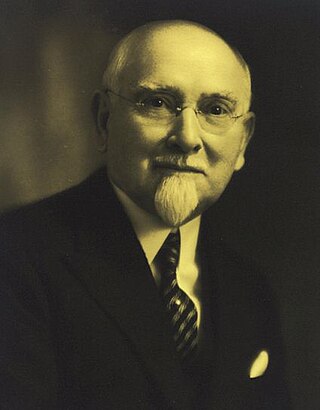
Edward Rogers Wood was a prominent financier in Canadian business. He was notable for his role in the development of the Brazilian Traction, Light and Power Company Limited and for his links with the "Peterborough Methodist Mafia" of George Albertus Cox.
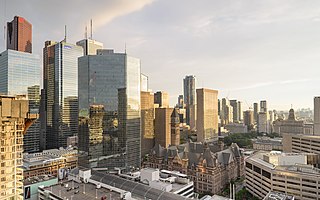
The Financial District is the central business district of Downtown Toronto, Ontario, Canada. It was originally planned as New Town in 1796 as an extension of the Town of York. It is the main financial district in Toronto and is considered the heart of Canada's finance industry. It is bounded roughly by Queen Street West to the north, Yonge Street to the east, Front Street to the south, and University Avenue to the west, though many office towers in the downtown core have been and are being constructed outside this area, which will extend the general boundaries. Examples of this trend are the Telus Harbour, RBC Centre, and CIBC Square.
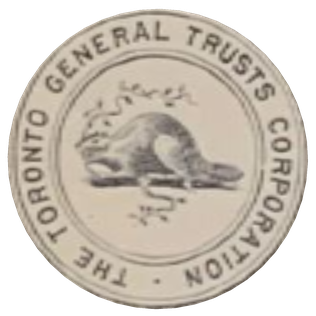
The Toronto General Trusts Corporation was a Canadian trust company that existed from 1872 to 1961. The country's first trust company, the TGT received its charter in 1872, but did not begin operations until 1882. Founded as the Toronto General Trusts Company, in 1899 it took over the Trust Corporation of Ontario, at which time it changed its name to the Toronto General Trusts Corporation. By the 1950s, Toronto General was Canada's fourth largest trust company after Royal Trust, Montreal Trust, and National Trust.
